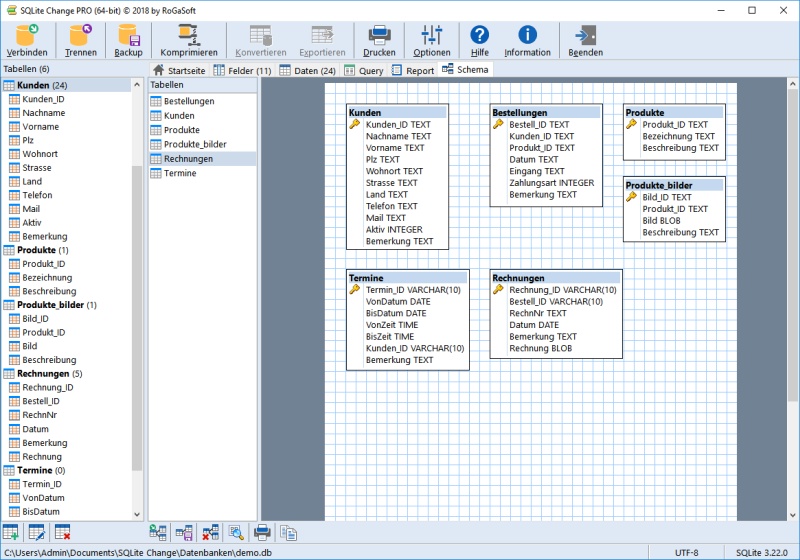

- #Dbcontext sqlite schema support manual#
- #Dbcontext sqlite schema support code#
- #Dbcontext sqlite schema support free#
And although this sounds like a harmless change, at deployment time it will result in database project tools copying the contents of the table to a temporary one, dropping/recreating it and then copying data to the new table. What happened more than once is developers inserting a column in the middle of the table, because, for example, the column name fits better in that specific position.


Since SQL Server data tools integrate nicely with Visual Studio, you can add/remove/rename columns to a table definition in a visual designer. Generally, it behaves like a magic blackbox and makes us developers less careful when modifying the database schema. Real production databases will have very different sizes, and when a complex schema change is combined with millions of records in a table, it might take quite a while for the database project tooling to apply the diff scripts. We have used both approaches in our team, with a coded one useful when creating a custom installer application and the CLI tool more suitable for Octopus-based deployments. The actual deployment can be done through the sqlpackage.exe command-line tool or programmatically by referencing a corresponding DLL. Microsoft’s SQL Server Data Tools is an excellent option for source-controlling database schema using a database project in Visual Studio. Now, let’s walk through the 5 tools one by one and see how they can be used.
#Dbcontext sqlite schema support code#
The accompanying code can be found at, and the solution looks like this: Where possible, projects also contain apply-migrations.bat batch file, showing how applying database changes can be automated via command-line (being able to do this is a must for our and probably many other teams where tools like Octopus Deploy are the core of the delivery pipeline). Hopefully this demonstrates how a typical agile development scenario can be supported by each tool. All of these projects solve the same super-simple task: define a Person table with several columns, then increase the length of FirstName column (as a separate migration file, where applicable). To make it slightly more interesting than just listing my impressions, I have created a GitHub repository with a VS solution with five projects illustrating how the discussed tools can be used. So, since we are not exactly happy with using database projects anymore, I decided to evaulate other options, with all their benefits and drawbacks, especially with the migration from database projects in mind. Database schema is managed using database projects, which does dynamic schema comparison at deployment time… and as much as this is convenient, it can sometimes lead to problems (more on this later). We release every 3 weeks and the whole release process is automated using Octopus Deploy with some sprinkles of Chocolatey on top. All of them communicate with MS SQL Server databases, and in some cases the schema goes about 7-8 years back… needless to say, it changes a lot. NET web applications, some legacy and some a bit newer. To give you some context, my team and I are currently working on a bunch of.
#Dbcontext sqlite schema support free#
Also, I’m not going to talk about commercial tools like RedGate’s SQL Compare in this context - first, because there are excellent free open-source alternatives, and second, because I just don’t have enough experience with them (probably, because of the first reason). NET, so I will only discuss tools that make sense for. Most of my career I have been developing with. Luckily, this problem is not new at all, so there are tools to help with that.
#Dbcontext sqlite schema support manual#
However, if a company follows an agile approach and is trying to deliver new releases continuously, then these manual updates can quickly become too much of a headache even for experienced DBAs. In some cases, this is a rare occasion and perhaps can be done manually. This schema might evolve with time, requiring production databases to be updated. Sometimes this storage is a relational database with a well-defined schema. Most useful applications these days store some data in some storage.


 0 kommentar(er)
0 kommentar(er)
